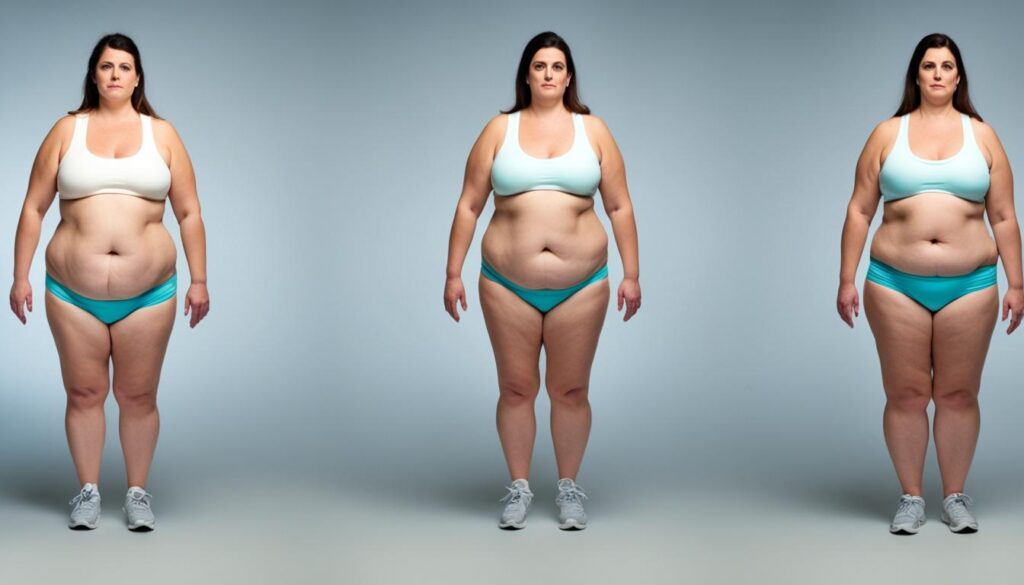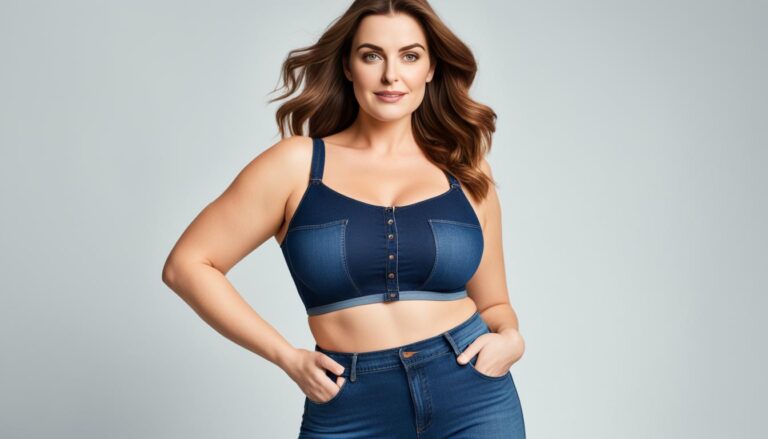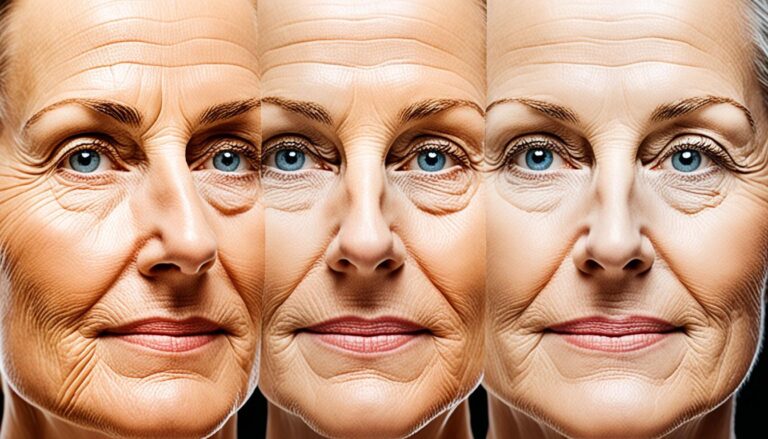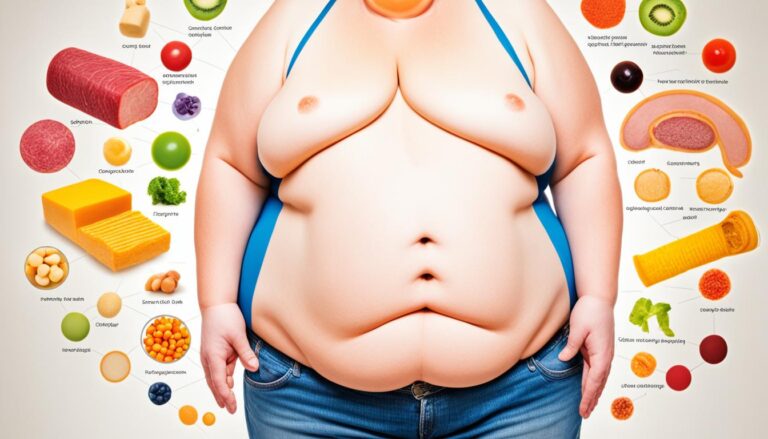Why do I look less fat than I am?
Have you ever noticed that sometimes you might look in the mirror and think you look less fat than the number on the scale suggests? It’s a puzzling phenomenon that many people experience. But what is the reason behind this weight perception discrepancy? Is it all in your head, or is there something else at play? In this article, we will delve into the factors that contribute to why you might look less fat than you actually are.
- Weight perception is influenced by various factors such as body composition, muscle mass, and daily weight fluctuations.
- Building muscle can make you appear leaner, even if your weight remains the same.
- Daily weight fluctuations, such as water retention and bloating, can impact how fat you appear on a day-to-day basis.
- Many people notice a slimming effect in the morning due to overnight water weight loss and coming off a fasted state.
- The term “skinny fat” refers to individuals who have a high body fat percentage despite appearing to be a healthy weight according to BMI.
The Role of Body Composition
Your body composition, which refers to the ratio of muscle to fat in your body, plays a significant role in how you appear physically. Even if your weight remains the same, building muscle can make you look leaner because muscle takes up less space than fat. This is why many women who engage in strength training may appear more toned and fit, despite not experiencing significant weight loss on the scale.
When comparing body composition to weight, it’s important to understand that the scale may not always reflect the true progress you’ve made. A person with a higher muscle to fat ratio may weigh the same as someone with more body fat, but they will appear more toned and have a higher level of fitness. This is why focusing on body composition rather than simply weight can provide a more accurate measure of your overall health and fitness level.
By incorporating strength training exercises into your fitness routine, you can increase your muscle mass and decrease your body fat percentage, resulting in a more favorable body composition. Not only does building muscle improve your physical appearance, but it also has numerous health benefits. Muscle mass helps support your metabolism, increase bone density, and enhance overall functional strength.
| Body Composition | Muscle to Fat Ratio | Weight Discrepancy |
|---|---|---|
| Muscle takes up less space than fat in the body | Appearance changes with body composition, not just weight |
“The scale may not accurately reflect changes in your body composition, as weight alone does not differentiate between muscle and fat. Focusing on building muscle and improving body composition is key for achieving a leaner and healthier physique.” – Dr. Emily Johnson, Fitness Expert
Weight Fluctuations and Perception
Daily weight fluctuations can have a significant impact on how fat you appear. Factors such as water retention, bloating, and even the time of day can affect your weight and create visual differences from one day to the next. These fluctuations can give rise to a body size illusion, where you may appear less fat on certain days due to these temporary changes.
Water retention is a common cause of daily weight fluctuations. Your body naturally retains water, and factors like hormonal changes, salt intake, and hydration levels can affect the amount of water your body holds onto. This can lead to temporary weight gain and bloating, making you appear heavier than you actually are.
Furthermore, the time of day you weigh yourself can also influence the numbers on the scale and your visual weight. Throughout the day, your weight can fluctuate due to factors such as food and fluid intake, digestion, and even physical activity. For example, after consuming a meal or through the accumulation of waste in your digestive system, you may temporarily weigh more. On the other hand, in the morning after a night of fasting, you may experience a lower weight due to the elimination of waste and fluid loss.
It’s important to recognize these daily weight fluctuations and understand that they are normal and not indicative of actual fat gain or loss. While they may affect the way you perceive your body, it’s essential to rely on consistent measurements and long-term progress when assessing your weight and overall health.
Remember, weight is just a number, and it should not define your worth or body image. Focus on overall health, body positivity, and self-acceptance.
- Water retention can cause temporary weight gain and bloating.
- The time of day can influence weight fluctuations.
- Consistent measurements and long-term progress are key when assessing weight.
| Factors | Effects on Weight |
|---|---|
| Water Retention | Temporary weight gain and bloating |
| Time of Day | Fluctuations due to food, fluid intake, digestion, and physical activity |
Understanding the impact of daily weight fluctuations on your perceived fatness is an important step in maintaining a healthy body image. By recognizing the factors that contribute to these fluctuations, you can better navigate the temporary changes in your appearance and focus on long-term progress and overall well-being.
The Morning Slimming Effect
Have you ever noticed that you look slimmer in the morning compared to later in the day? You’re not alone. Many people experience what is known as the morning slimming effect, which can give you a thinner appearance when you first wake up. This phenomenon is attributed to two main factors: water weight loss and coming off a multi-hour fast.
During the night, your body goes through a natural detoxification process and processes water. As a result, you may lose water weight while you sleep. This can lead to a temporary reduction in bloating and a slimmer appearance in the morning.
In addition to water weight loss, the morning slimming effect can also be influenced by the fact that you are coming off a multi-hour fast. When you wake up, your stomach is likely to be empty or relatively empty, which can contribute to a flatter belly and a lower number on the scale.
While the morning slimming effect can make you feel good about your appearance, it’s important to keep in mind that it is temporary and can vary from person to person. Factors such as body composition, muscle mass, and overall hydration levels can also impact how much you experience this effect.
Remember, even if you look slimmer in the morning, weight alone is not a reliable measure of progress or health. Focus on overall well-being and maintaining a healthy lifestyle rather than solely relying on visual changes.
“Skinny Fat” Phenomenon
The term “skinny fat” refers to individuals who have a relatively high body fat percentage despite appearing to be a healthy weight according to BMI standards. This phenomenon highlights the fact that weight alone is not a reliable indicator of health. Even if you fall within the normal weight range according to BMI, you may still have a high body fat percentage, which can have negative health implications.
Having a high body fat percentage increases your risk of heart disease, diabetes, and abnormal cholesterol levels. This is why it’s essential to consider factors beyond weight and BMI when assessing your overall health.
To understand the “skinny fat” phenomenon, it’s crucial to delve into the concept of body fat percentage. Body fat percentage refers to the proportion of fat in your body compared to lean mass, such as muscle and organs. While a healthy body fat range varies based on factors like age and gender, a higher body fat percentage within the normal weight range can indicate a condition called normal weight obesity.
Normal Weight Obesity
Normal weight obesity occurs when individuals have a high body fat percentage despite having a normal BMI. This condition is characterized by an imbalance between fat and muscle mass. While you may appear thin or “skinny” based on your weight and BMI classification, your body may actually have excessive fat deposits, which can lead to various health issues.
Normal weight obesity is a significant concern because it can increase the risk of metabolic disorders, cardiovascular problems, and other health complications typically associated with obesity. In fact, research suggests that having normal weight obesity may be more detrimental to health than simply being overweight.
To better understand your body composition and identify normal weight obesity, it’s essential to measure your body fat percentage accurately. While there are several methods for measuring body fat percentage, the most accurate ones include DEXA scans, hydrostatic weighing, and skinfold calipers. These methods provide a precise assessment of your fat distribution and the overall ratio of fat to muscle in your body.
The Impact of Body Fat Percentage
Body fat percentage has a significant influence on overall health. While muscle weighs more than fat, having an unhealthy body fat percentage can contribute to various health issues, as mentioned earlier. In addition to the increased risk of heart disease, diabetes, and abnormal cholesterol levels, high body fat percentage can also affect your hormonal balance and organ function.
Excess fat can lead to a state of chronic low-grade inflammation, which is associated with insulin resistance, a major risk factor for type 2 diabetes. Furthermore, high body fat percentage can interfere with hormone production and regulation, contributing to imbalances that affect metabolism, mood, and energy levels.

Understanding and managing body fat percentage is crucial for maintaining optimal health. While achieving a healthy weight is important, focusing solely on weight loss may not address the underlying issue of normal weight obesity. Incorporating a balanced exercise routine, including both cardiovascular exercises and strength training, can help improve body composition by reducing body fat and increasing muscle mass.
Remember, it’s not just about how you look on the outside; it’s about prioritizing your health and well-being. By addressing and managing body fat percentage, you can take steps towards achieving a healthier body and reducing potential health risks.
| Health Risks Associated with Normal Weight Obesity |
|---|
| Increased risk of heart disease |
| Higher likelihood of developing type 2 diabetes |
| Elevated levels of abnormal cholesterol |
| Hormonal imbalances |
| Metabolic disorders |
| Poor organ function |
Importance of Muscle Mass
One of the key factors in the “skinny fat” phenomenon is often the lack of muscle mass. Building and maintaining muscle is crucial for your overall health and well-being. In addition to providing strength and endurance, muscle mass plays a vital role in improving metabolic health, protecting internal organs, and influencing body fat distribution.
When it comes to metabolic health, having more muscle mass can significantly impact your body’s ability to burn calories and maintain a healthy weight. Muscle is metabolically active tissue, meaning it requires more energy to maintain compared to fat. As a result, individuals with higher muscle mass tend to have a higher metabolic rate, even at rest, which can help prevent weight gain and promote weight loss.
Furthermore, muscle mass can influence the way your body stores fat. Studies have shown that individuals with higher muscle mass tend to have less visceral fat (fat stored around the organs) and a more favorable body fat distribution. Visceral fat is associated with various health risks such as heart disease, diabetes, and metabolic syndrome. By building and maintaining muscle mass, you can help reduce these risks and improve your overall metabolic profile.
“Having more muscle mass can significantly impact your body’s ability to burn calories and maintain a healthy weight.”
The Impact of Resistance Training
One of the most effective ways to increase muscle mass is through resistance training, also known as strength training or weightlifting. Resistance training involves using external resistance, such as dumbbells, barbells, or resistance bands, to challenge your muscles and stimulate their growth. This type of exercise can be tailored to your fitness level and goals, allowing you to progressively increase the intensity and resistance over time.
Engaging in regular resistance training can have numerous benefits beyond muscle growth. It can improve bone density, enhance joint stability, and increase overall strength and functional capacity. Additionally, resistance training can help improve body composition by reducing body fat, specifically when combined with a balanced diet and regular cardiovascular exercise.
The Role of Nutrition
Nutrition also plays a crucial role in supporting muscle growth and maintenance. Adequate protein intake is essential as it provides the building blocks necessary for muscle repair and growth. Aim to include a source of high-quality protein, such as lean meats, poultry, fish, eggs, dairy products, legumes, and tofu, in each of your meals. Additionally, consuming a well-balanced diet that includes a variety of fruits, vegetables, whole grains, and healthy fats can provide the necessary nutrients for optimal muscle health and overall well-being.
| Benefits of Muscle Mass | Ways to Build Muscle Mass | |
|---|---|---|
| 1. Improved metabolic health | 1. Resistance training | 1. Engage in regular strength training |
| 2. Reduced risk of visceral fat | 2. Adequate protein intake | 2. Consume protein-rich foods |
| 3. Favorable body fat distribution | 3. Balanced diet | 3. Eat a variety of nutritious foods |
| 4. Increased strength and functionality | ||
Overall, building and maintaining muscle mass is not just about aesthetics but also about your long-term health and well-being. By incorporating resistance training into your fitness routine and adopting a balanced and nutritious diet, you can optimize your muscle health, improve your metabolic health, and positively influence your body fat distribution.
Factors Affecting Weight Perception
When it comes to weight perception, various lifestyle factors can significantly influence how fat you appear. These factors include:
Diet
A balanced diet plays a crucial role in not only your overall health but also in how your body looks. Consuming nutrient-rich foods and maintaining portion control can help you achieve a healthy weight and improve body composition. A diet high in processed foods and added sugars, on the other hand, can contribute to weight gain and make you look and feel less lean.
Exercise
Regular exercise is essential for not only maintaining a healthy weight but also for improving muscle tone and definition. Physical activity helps increase muscle mass and decrease body fat, making you appear leaner and more toned. Incorporating both cardiovascular exercises and strength training into your fitness routine is key to achieving optimal body composition.
Stress
Managing stress levels is crucial when it comes to weight perception. Chronic stress can lead to the release of cortisol, a hormone that is associated with increased appetite and weight gain, particularly around the midsection. Finding stress-management techniques such as meditation, yoga, or engaging in hobbies can help reduce stress levels and promote a healthier body image.
Sleep
Adequate sleep is often overlooked but plays a significant role in weight perception. Sleep deprivation can disrupt hormonal balance, increasing hunger hormones and decreasing satiety hormones, which can lead to overeating and weight gain. Getting enough quality sleep supports overall health and helps you look and feel your best.
Remember, a combination of a balanced diet, regular exercise, stress management, and sufficient sleep is key to achieving a healthy weight and a body that you’re comfortable and confident in.
| Lifestyle Factors | Impact on Weight Perception |
|---|---|
| Diet | Can influence body composition and appearance |
| Exercise | Helps improve muscle tone and enhances body composition |
| Stress | Chronic stress can contribute to weight gain and affect body image |
| Sleep | Affects hormonal balance and can influence appetite and weight |

The Influence of Clothing and Posture
The clothing you wear and your posture can have a significant impact on how fat you appear. By making strategic choices in your clothing and paying attention to your posture, you can create optical illusions that make you look less fat.
Choosing the Right Clothing
When it comes to clothing choice, opting for well-fitting clothes can do wonders for your appearance. Clothes that fit properly can help create a smoother silhouette, accentuate your curves in all the right places, and minimize the appearance of any excess fat.
For example, selecting clothes with vertical stripes can create the illusion of a longer and leaner body, making you appear slimmer. Additionally, dark-colored clothing can also have a slimming effect as it tends to camouflage any bulges or problem areas.
Remember, the key is to choose clothes that flatter your body type and highlight your best features. Experiment with different cuts, patterns, and colors to find what works best for you.
The Power of Posture
Your posture plays a crucial role in how you are perceived. By maintaining good posture, you can instantly improve your overall appearance and make yourself look slimmer.
Stand up straight, roll your shoulders back, and engage your core muscles to create a tall and confident posture. This simple adjustment can instantly elongate your torso, tighten your abdominal muscles, and create a more streamlined silhouette.
“Good posture can not only make you appear slimmer, but it also promotes spinal health and improves your overall body alignment.”
Additionally, being mindful of your posture while sitting can also make a difference. Avoid slouching and make a conscious effort to sit up straight and tall.
Incorporating exercises that strengthen your core muscles and improve your posture, such as yoga or Pilates, can also be beneficial in achieving a more upright and slimmer appearance.
By paying attention to your clothing choices and practicing good posture, you can create optical illusions that make you appear less fat and enhance your overall body confidence.
The Role of Genetics and Body Shape
When it comes to how fat you appear, genetics and body shape have a significant influence. Each individual has a unique genetic makeup that determines their body’s characteristics, including where fat tends to accumulate. Some people may naturally carry more fat in certain areas, such as the hips or thighs, while others may have a more even distribution of fat throughout their body.
This inherent fat distribution plays a crucial role in how fat you look, regardless of your actual body fat percentage. Even if two people have the same amount of body fat, their body shapes and the way fat is distributed can create the illusion of one person looking slimmer or leaner than the other.
To better understand the impact of genetics and body shape, consider the following example:
| Body Shape | Description |
|---|---|
| Ectomorph | Characterized by a slender frame, fast metabolism, and difficulty gaining weight or muscle. |
| Mesomorph | Typically athletic and muscular, with an efficient metabolism and ability to gain and lose weight relatively easily. |
| Endomorph | Tends to have a higher body fat percentage, a slower metabolism, and a rounder or curvier body shape. |
As you can see, body shape variations exist due to genetic factors. Someone with an endomorph body shape may naturally have a higher body fat percentage and carry fat more prominently in certain areas. On the other hand, an ectomorph body shape may make a person appear leaner, even if they have a similar body fat percentage to someone with an endomorph body shape.
Understanding your genetic predispositions and body shape can help you develop realistic expectations and focus on overall health rather than solely relying on appearances or body fat percentages.

The Impact of Body Image and Self-Perception
Body image and self-perception have a significant impact on how you perceive your own body, regardless of reality. Many individuals have a distorted perception of their bodies, often perceiving themselves as fatter than they actually are. This distorted perception can be influenced by societal standards, the media’s portrayal of ideal body types, and personal insecurities, leading to poor body image and lower self-esteem.
When it comes to body image, it’s important to recognize that beauty comes in all shapes and sizes. You are more than just a number on the scale or the reflection in the mirror. Your self-worth should not be determined by how fat or thin you think you are. Instead, focus on valuing yourself for who you are as a person, embracing your unique qualities, and focusing on your overall well-being.
“Beauty begins the moment you decide to be yourself.” – Coco Chanel
Developing a positive body image starts with self-acceptance and self-love. It involves appreciating your body for all that it can do, rather than obsessing over perceived flaws or imperfections. Remember that your worth as an individual extends far beyond your appearance. Embrace your strengths, talents, and achievements, and celebrate the incredible capabilities of your body.
Ways to Cultivate a Positive Body Image:
- Practice self-care and engage in activities that make you feel good about yourself.
- Surround yourself with positive influences, whether it’s supportive friends, uplifting social media accounts, or empowering role models.
- Challenge negative thoughts and replace them with affirmations and positive self-talk.
- Acknowledge and appreciate the unique qualities that make you who you are.
- Foster a healthy relationship with food and exercise, focusing on nourishment and enjoyment rather than strict rules or punishment.
Remember, your body is amazing, regardless of its size or shape. You deserve to feel confident and worthy, regardless of societal beauty standards. Embrace your individuality, practice self-love, and cultivate a positive body image that celebrates your true self.
Conclusion
Understanding the complex interplay of factors that contribute to how you perceive your own body weight is crucial. It is important to recognize that weight alone is not a comprehensive measure of progress, health, or self-worth. Your body composition, muscle mass, daily weight fluctuations, and other variables all shape your perception of your physical appearance.
Instead of solely focusing on weight, it is essential to prioritize overall health, body positivity, and self-acceptance. By shifting the emphasis from weight perception to holistic well-being, you can cultivate a positive body image and maintain a healthy mindset.
Remember, your self-perception should not be solely defined by a number on a scale. Concentrate on building a strong and nourishing relationship with your body, prioritizing factors such as physical fitness, mental well-being, and self-care. By doing so, you can foster a positive body image that aligns with your own definition of health and happiness.







